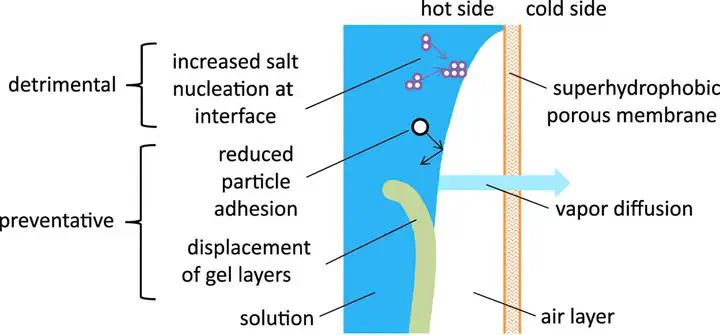Combining Air Recharging and Membrane Superhydrophobicity for Fouling Prevention in Membrane Distillation

Abstract
In previous studies of the desalination technology membrane distillation (MD), superhydrophobicity of the membrane has been shown to dramatically decrease fouling in adverse conditions, but the mechanism for this is not well understood. Additionally, air layers present on submerged solid superhydrophobic surfaces have been shown to dramatically reduce biofouling, and air-bubbling has been used to reducing fouling and increase flux and efficiency in MD. The present work studies the effect of maintaining air layers on the membrane surface and superhydrophobicity as a new method for preventing fouling of MD membranes by salts, particulates, and organic particles. Superhydrophobic MD membranes were prepared using initiated chemical vapor deposition (iCVD) of perfluorodecyl acrylate (PFDA) on poly(vinyldene fluoride) PVDF membranes and used to study the effects of surface energy on fouling. A static MD setup with evaporation through an MD membrane but no condensing of permeate was used to examine the effect of air exposure on fouling, by measuring the increase in weight of the membrane caused by scale deposition. Theory was derived for the reduction of fouling on superhydrophobic surfaces, and a review of related theory was included. Air layers may displace fouling gels, reduce the area of feed in contact with the membrane, reduce foulant adhesion, and enhance superhydrophobicity in a Cassie–Baxter state. The study shows that the presence of air on the membrane surface significantly reduces biological fouling, but in some cases had mildly exacerbating effects by increasing crystal formation of salts, especially when the air was not saturated with water vapor. Air recharging combined with superhydrophobicity reduced fouling in several cases where hydrophobic membranes alone did little.